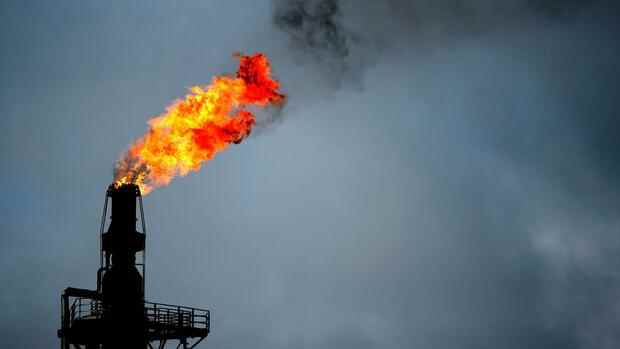The World Bank and IMF say that inflation is currently mainly driven by high energy prices.
(Photo: dpa)
Dusseldorf Energy prices will rise by an average of more than 80 percent this year and could become a growth risk for those countries that are dependent on energy imports. This is what the World Bank predicts in its raw materials market outlook published today.
Events this year made it clear that the changing weather patterns caused by climate change posed a growing risk to energy markets and affected both demand and supply, the report said.
“The surge in energy prices carries significant short-term risks for global inflation and, if it continues, could also weigh on growth in energy-importing countries,” said Ayhan Kose, chief economist and director of the World Bank’s Prospects Group.
The drastic rise in raw material prices is proving to be more pronounced than previously assumed. Recent price volatility could also make economic policy decisions difficult as countries recover from last year’s global recession.
Top jobs of the day
Find the best jobs now and
be notified by email.
According to the World Bank forecast, energy prices will remain at a high level until next year. The economists of the Washington-based organization do not expect the situation to ease until the second half of 2022. Then the bottlenecks on the supply side should dissolve. This also applies to raw materials such as food and metals, the prices of which have also risen enormously this year.
The World Bank’s forecast is consistent with that of other international organizations such as the International Monetary Fund (IMF). “We do not expect an inflation spiral in Europe at this point in time,” said Alfred Kammer, director of the IMF’s Europe department, in Washington this week. The high inflation is due to the rise in energy prices and is expected to subside in the course of 2022.
Crude oil remains expensive
“As global growth slows and supply bottlenecks dissipate, metal prices are expected to fall five percent in 2022, after rising an estimated 48 percent in 2021,” the World Bank report said. After an anticipated increase of 22 percent in the current year, agricultural prices are also expected to fall slightly next year if the supply situation improves and energy prices stabilize.
According to the World Bank, commodity prices have risen faster this year than they have been in ten years. For example, natural gas and coal prices reached record highs. In view of the very low inventory levels and ongoing supply bottlenecks, there could be further price peaks in the near future.
According to the World Bank, crude oil prices (an average of the Brent, WTI and Dubai varieties) will average $ 70 per barrel in 2021, an increase of 70 percent. A price of $ 74 per barrel is predicted for 2022 as oil demand increases and returns to pre-pandemic levels.
Washington economists warn of second-round effects in price dynamics. “The high natural gas and coal prices are affecting the production of other commodities and posing an upside risk to price forecasts,” said John Baffes, senior economist at the World Bank. The production of fertilizers has been throttled by the higher natural gas and coal prices. The higher fertilizer prices would have, in turn, pushed up the input costs for important food crops.
More: Chaos on the commodity exchanges – energy crisis drives up prices for industrial metals

